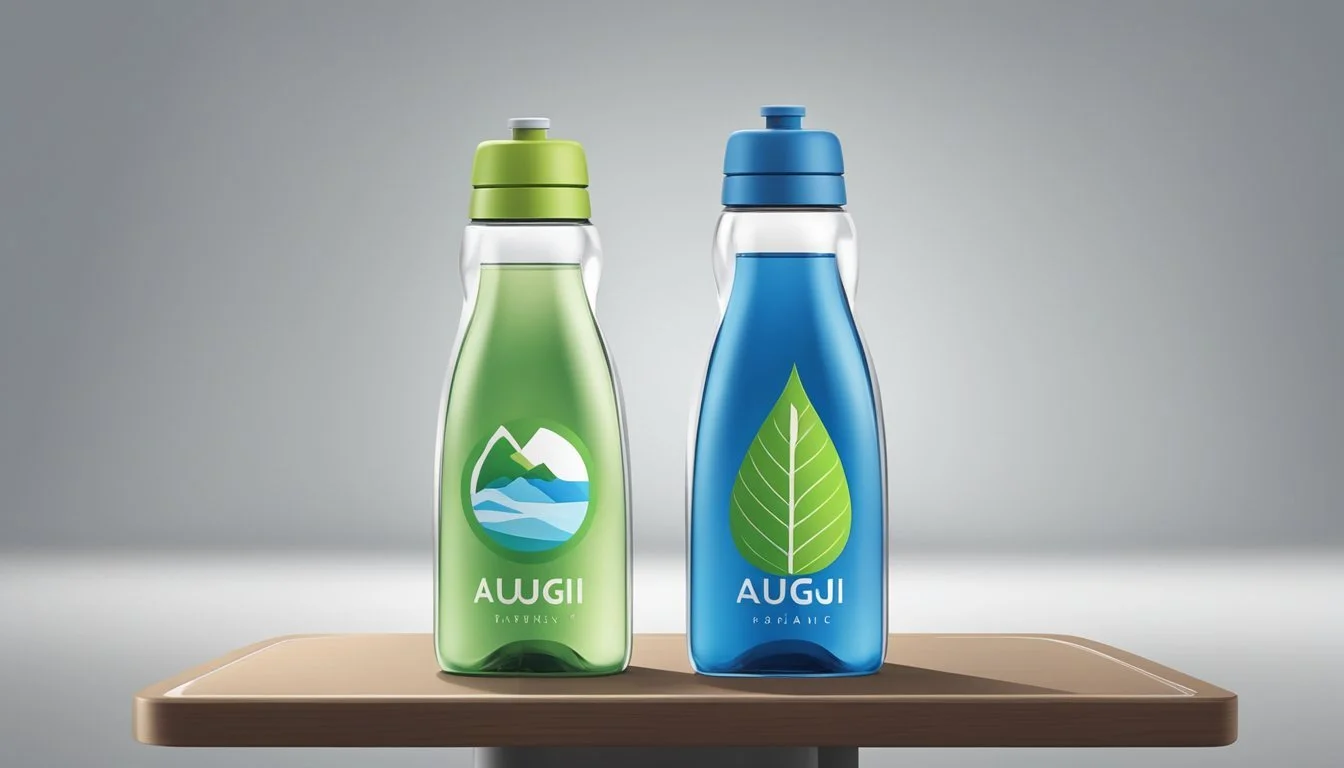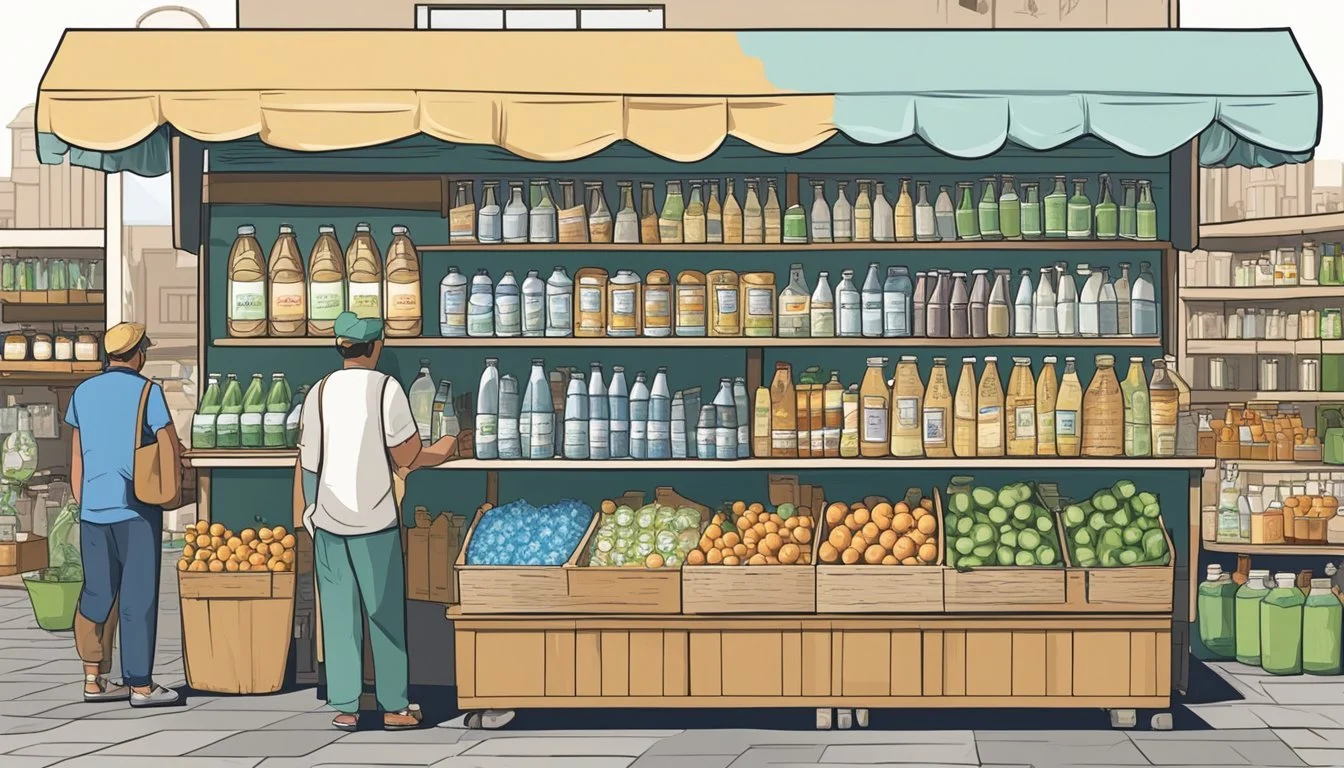Path vs. Augi
Comparing the Best Bottled Water Brands
Choosing the best bottled water can be a daunting task, especially when faced with premium options like Path and Augi. Both brands offer distinct characteristics that cater to different preferences. Augi, a purified water from the Leesburg, Va., municipal water supply, boasts essential electrolytes such as sodium, potassium, and magnesium, which are key for effective hydration. On the other hand, Path, one of the few purified waters recognized in A-tier rankings, stands out for its purity and sustainable packaging.
Path is often praised for its clean taste and environmentally-friendly approach, making it an appealing option for eco-conscious consumers. Meanwhile, Augi also emphasizes purity and hydration benefits, with additional minerals that contribute to overall health. These attributes can provide an edge for those seeking a balanced and nutrient-rich water option.
Ultimately, the choice between Path and Augi comes down to personal preference. Whether it's the environmental benefits of Path or the mineral-rich profile of Augi, each offers unique benefits that cater to specific health and lifestyle needs.
Evaluating Bottled Water
When choosing between different bottled water brands, several key factors come into play. These include taste, health benefits, purity, and the mineral and electrolyte content of the water.
Taste Profiles and Flavor Nuances
Taste plays a significant role in the selection of bottled water. Path water tends to have a clean, crisp taste with no significant aftertaste, making it a favorite among those who prefer a neutral flavor. Augi water has a subtle sweetness, attributed to its natural mineral content.
Flavor nuances can also be influenced by the pH level. Spring water varieties often offer a distinct, fresh taste because of their natural filtering process. In contrast, purified water like Augi may have a more refined taste due to removal of contaminants through reverse osmosis.
Health Considerations and Hydration Benefits
Health benefits of bottled water stem from its hydration capabilities and potential added nutrients. Path water, known for its sustainable practices, uses a filtration process that maintains essential minerals beneficial for hydration. It’s often praised for its alkaline pH level, which some believe aids in balancing the body's acidity.
Augi water is often marketed for its reverse osmosis purification, resulting in extremely clean drinking water. This process removes impurities, ensuring the water is safe and healthy for consumption. Both brands emphasize hydration but offer slightly different health advantages based on their production processes.
Cleanliness and Purity of Water
The purity of bottled water is paramount. Path emphasizes its commitment to sustainability and clean drinking water by using high-grade filtration processes. Their water is sourced from natural springs, providing a pure and clean product.
Augi water focuses on purity through advanced purification techniques like reverse osmosis. This removes most contaminants, including viruses and bacteria, ensuring exceptionally clean and safe water. Path and Augi both strive for high purity levels but achieve this through different methods — natural springs versus advanced technology.
Mineral and Electrolyte Contents
Mineral and electrolyte content in bottled water can affect both taste and health benefits. Path water retains natural minerals, which contribute to its fresh taste and potential health benefits. These minerals, such as calcium and magnesium, are essential for various bodily functions.
Augi water, on the other hand, often undergoes a process that removes minerals and then reintroduces them in controlled quantities. This allows for a balanced composition tailored for optimal hydration. Both Path and Augi provide beneficial electrolytes but use different approaches. Path relies on natural content; Augi uses a more controlled supplementation process.
Environmental Factors and Sustainability
Both Path and Augi must consider environmental impact and sustainability in their bottled water production. Key aspects include packaging materials, water sources, and company-led initiatives.
Packaging Materials and Waste
Path and Augi utilize different packaging materials to address environmental concerns. Path employs recyclable aluminum bottles, which are more sustainable compared to single-use plastic bottles. Aluminum is known for its durability and recyclability, often resulting in a lower environmental footprint.
Augi, on the other hand, uses plastic bottles, which contribute significantly to plastic waste. Although many water brands tout their use of recyclable plastics, the actual recycling rate remains low.
Plastic waste poses a serious environmental threat, so innovative packaging solutions like reusable bottles or sustainable packaging alternatives are crucial for reducing ocean and landfill pollution.
The Sustainability of Water Sources
The sustainability of water sources is vital for environmental conservation. Path sources its water from a natural spring, ensuring minimal impact on aquifers and local ecosystems. Natural springs are often replenished naturally, making them a more sustainable choice for long-term water extraction.
Augi sources its water from an artesian aquifer, which can also be highly sustainable if managed properly. Artesian aquifers are underground layers filled with water, accessible through natural pressure. Proper management ensures that these sources remain viable for future use.
Selecting a sustainable water source not only preserves the environment but also ensures that the water remains pure and plentiful.
Water Brands' Sustainability Efforts
Both Path and Augi have initiated various sustainability efforts, though their approaches differ. Path focuses on reducing the use of single-use plastic bottles by promoting reusable, recyclable aluminum bottles. This initiative directly addresses the pressing issue of plastic pollution.
Augi emphasizes recycling programs and aims to improve the recycling rate of its plastic bottles. Implementing recycling-friendly policies, Augi encourages consumers to participate in recycling efforts.
Both brands are striving to enhance their environmental impact and promote eco-friendliness. Their ongoing efforts highlight the importance of corporate responsibility in achieving sustainability goals.
Convenience Factors
When choosing bottled water, convenience plays a crucial role. Path and Augi both offer various benefits in this regard.
Availability
Path is readily available in major grocery stores and convenience stores, making it easy for shoppers to pick it up during regular errands.
Augi, sourced from Leesburg, Va., also enjoys wide distribution, though not necessarily as ubiquitous as Path.
Portability
Path comes in lightweight, portable bottles that are easy to carry around. This makes it ideal for those on-the-go.
Augi also offers portable options, though the slight sulphuric taste may be less appealing for some people.
Accessibility and Packaging
Both brands provide practical packaging. Path uses bottles designed for easy grip and portability, enhancing user experience.
Augi similarly focuses on user-friendly packaging, making it convenient to carry and store.
Here is a simple comparison table:
Factor Path Augi Availability Widely available in grocery and convenience stores Also available, but slightly less common Portability Lightweight and easy to carry Portable, but taste may be off-putting to some Packaging User-friendly, easy grip design Practical and convenient packaging
Recycling and Sustainability
Path prides itself on sustainability, using bottles made from recycled plastic. This eco-friendly effort adds an additional layer of convenience for environmentally conscious buyers.
Augi has not prominently featured its recycling initiatives, which might influence the choice of eco-aware consumers.
These factors combined make both Path and Augi convenient, but each has distinct features that may appeal to different types of consumers.
Comparison Between Path and Augi
Path and Augi differ significantly in their origin, taste, health benefits, and environmental impact. Understanding these differences can help you choose the right bottled water for your needs.
Origin and Source of Water
Path sources its water from natural springs and artesian aquifers, often promoting its pristine and high-quality origins.
Augi, on the other hand, utilizes purified water from municipal sources, specifically the Leesburg, Va., municipal water supply.
Path:
Source: Natural springs and artesian aquifers
Region: Various pristine locations
Augi:
Source: Municipal supply
Region: Leesburg, Va.
Taste and Flavor Difference
Path water is known for its clean, crisp taste due to its natural spring or artesian sources, which often contributes to a more refreshing flavor profile.
Augi, while purified, has a slight sulphuric taste that some might find fishy. This difference can significantly impact user preference.
Path:
Taste: Clean, crisp, refreshing
Notes: Reflects the purity of its natural source
Augi:
Taste: Slight sulphuric, bordering on fishy
Notes: Can be off-putting for some consumers
Health and Hydration Comparison
Path often markets its water's natural minerals, which can offer additional health benefits. Its natural origin suggests fewer artificial additives.
Augi, being municipally sourced, undergoes extensive purification but may lack some of the natural mineral content found in Path.
Path:
Mineral Content: Naturally occurring minerals
Health Benefits: Additional health benefits from natural minerals
Augi:
Mineral Content: Lower, due to purification
Health Benefits: Effective hydration but fewer natural minerals
Environmental and Sustainability Impact
Path focuses on sustainability by offering reusable containers, aiming to reduce plastic waste. Its eco-friendly approach appeals to environmentally conscious consumers.
Augi's reliance on municipal water sources and conventional packaging might not align with the sustainability goals of some users.
Path:
Packaging: Reusable containers
Eco-Friendliness: High due to sustainability efforts
Augi:
Packaging: Conventional, single-use bottles
Eco-Friendliness: Lower due to reliance on plastic
In conclusion, each offers unique attributes based on source, taste, health benefits, and environmental impact.
Market Considerations
Path and Augi present unique market positions in the competitive bottled water industry. Understanding the price and value as well as the distribution and accessibility of these brands is essential for consumers to make informed purchasing decisions.
Price Comparison and Value
Path is generally positioned as a premium water brand due to its emphasis on sustainability and purity. It utilizes a clean supply chain and premium packaging, often leading to a higher price point. Consumers willing to invest in environmentally-friendly products may find Path to be an excellent option despite its cost.
Augi, sourced from municipal water supply, tends to be more affordable. It targets budget-conscious consumers who prioritize cost over premium branding. The price difference is substantial, making Augi appealing for everyday hydration needs.
Path:
Premium pricing
Focus on sustainability
High-quality packaging
Augi:
More affordable
Accessible to budget-conscious consumers
Municipal water source
Distribution and Accessibility
Path's distribution network covers a wide range of grocery stores and convenience stores. They focus on making their product available in urban centers where demand for sustainable products is higher. Path's strategic distribution helps maintain its premium market presence.
In contrast, Augi’s distribution leverages its affordability and local appeal. It is commonly found in grocery stores and convenience stores across various regions. This accessibility makes Augi a practical option for consumers looking for reliable and inexpensive bottled water.
Key Points:
Path: Widely available in urban areas; targets premium consumers.
Augi: Extensive distribution in both urban and rural areas; appeals to budget-conscious buyers, making it one of the more accessible brands on the market.
More About Path
Mountain Valley Spring Water vs Path: Which Bottled Water is Better?
Path vs Whole Foods Italian Still Mineral water: Which Bottled Water is Better?





